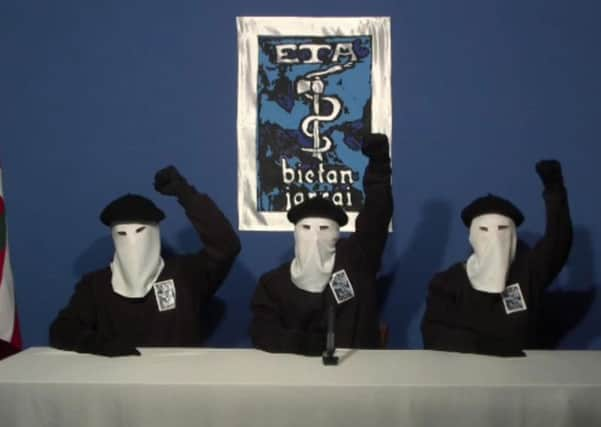Started with 1960s students


It declared at least two ceasefires, both abandoned.
The name Euskadi Ta Azkatasuna (ETA) stands for Basque Homeland and Freedom, first emerged in the 1960s as a student resistance movement bitterly opposed to General Franco’s repressive military dictatorship, which banned the Basque language and culture.
But despite the fact that Spain’s Basque country today enjoys huge autonomy – its own parliament, police, education and taxation – ETA was determined to push for full independence.
Advertisement
Hide AdAdvertisement
Hide AdMany of those killed by ETA were policemen, or politicians who opposed its bloodshed.
Its political wings (operating under various names, including recently ‘Batasuna’) have been banned, as both wings were seen as inextricably linked.
In May 2009 Basque nationalists failed to win an out-right majority, and the Basque parliament voted in its first non-nationalist government in 30 years.
ETA attacks declined in the wake of the 2004 Madrid al-Qaeda bombings; however its 2006 “permanent” ceasefire ended with the bombing of a Madrid airport that left two people dead. At least eight people have been killed by the group since then.